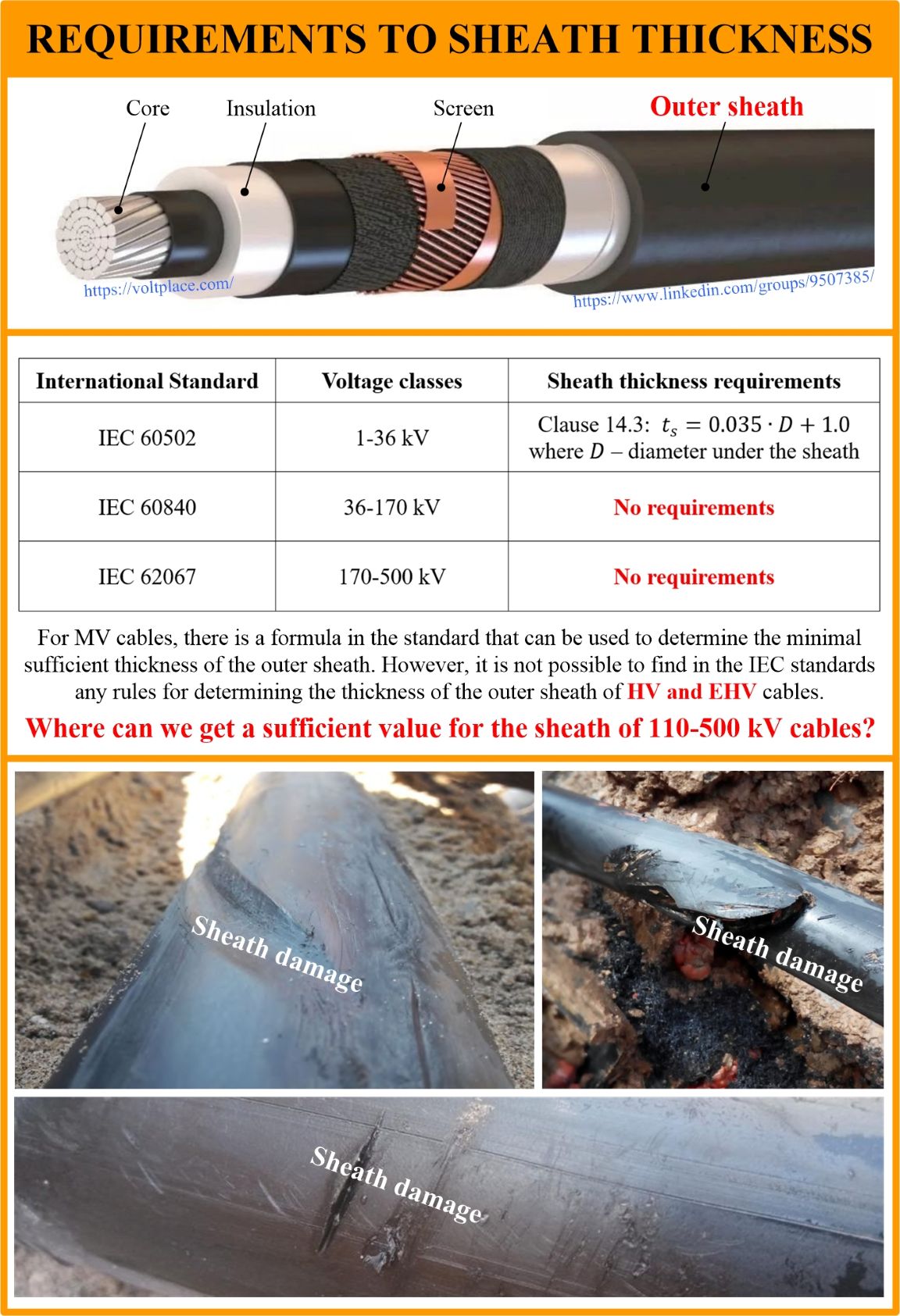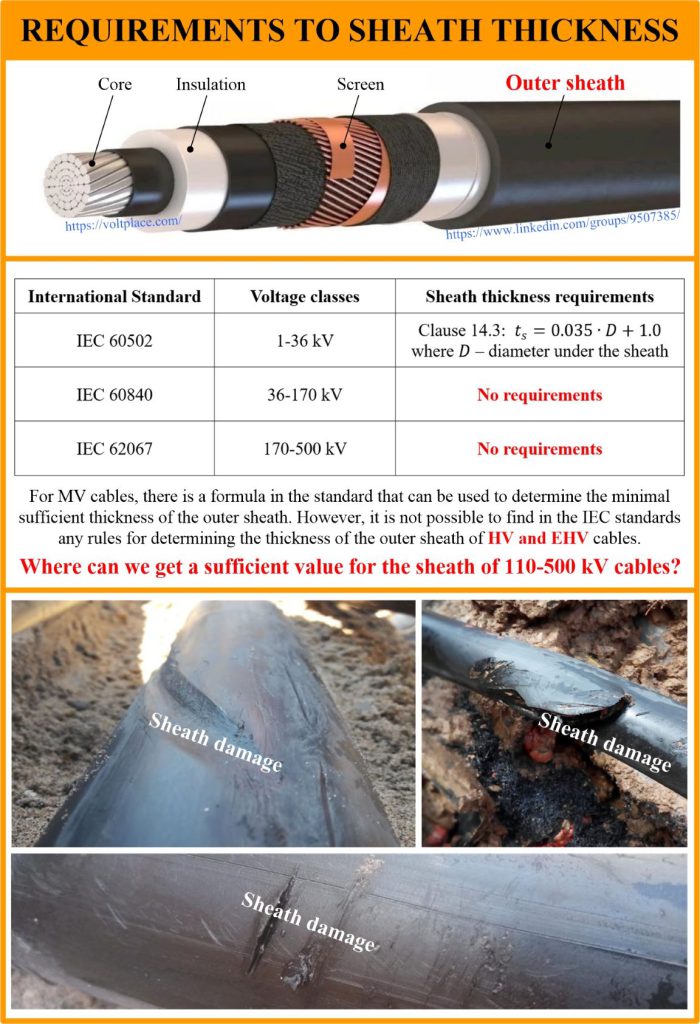
Cable sheath thickness
It has always been obvious to me that in terms of thickness, there are two types of outer sheath of high voltage (HV) and extra-high voltage (EHV) cables:
✅ Ordinary sheath – it has a thickness of about 5 mm.
✅ Reinforced sheath – it has a thickness of about 6-7 mm.
However, when I started trying to find out where I got it from, it turned out that there were no requirements for sheath thickness in the IEC standards for HV and EHV cables. The IEC gives a formula for medium voltage (MV) cables, but not for HV and EHV cables.
In IEC on HV-EHV, there are requirements for the voltages (AC/DC) that the sheath must withstand, but there are no formulae or recommendations for choosing the minimal sheath thickness. At the same time, all of us know that mechanical damage to the outer sheath is the most common type of damage to cables, and therefore the thickness of the sheath is a very critical parameter.
The question arises – if not IEC, then what do we rely on when we want to determine the thickness of the sheath of HV and EHV cables? And why don’t we have such an important requirements in IEC?

I have checked cable catalogues of many factories and can say that, for instance, for 132 kV cables, most of factories offer the standard sheath with 4 mm thickness, but how do they calculate it? To be honest, I know the factory which has 6 mm for 132 kV and not 4 mm. This factory states 6 mm as a normal thickness and not reinforced! Also, I known cable manufactures which offer 3.5 mm for 132 kV class (for cores of 800-1500 mm2).
For the same 132 kV class, why does someone have 3.5 mm, someone have 4 mm, someone have 6 mm? This is not normal to have such a wide range of thicknesses for a standard sheath design. If there is a special requirement from customer – of course, sheath thickness can be any, according to the order, but today we are talking about standard cable design, not a special.
All the factories have the same sheath requirements to withstand voltages (per IEC), the same sheath material, and cable laying conditions. But while one factory offers sheath of 3.5 mm, the second offers 4 mm, the third – 6 mm. This is crazy, and I cannot find a reason of such a mess.
You can discuss this and many other issues in LinkedIn cable group. Your opinion is important for the cable industry! Thank you
